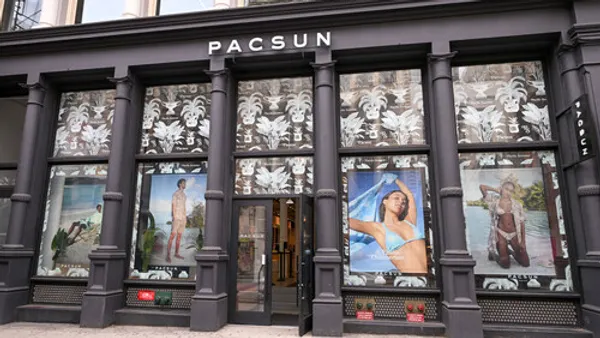Dive Brief:
- Best Buy's revenue fell by nearly $1 billion from last year on a comparable sales decline of 8% in the first quarter. Operating income fell by nearly 40%. Earnings and sales beat analyst forecasts after a week of misses by some major retailers.
- As the consumer electronics specialist runs up against macro pressures — including inflation, supply chain costs, the end of stimulus payments and returns to prepandemic spending patterns — Best Buy reduced its sales and profit estimates for the year.
- Management now expects revenue of $48.3 billion to $49.9 billion, about $1 billion less than forecasted in March, and an operating income rate potentially smaller by 20 basis points.
Dive Insight:
Best Buy faced a tough comparison in Q1, given the more than 37% comparable sales growth at this time last year, when employment was making a sharp rebound, customers had stimulus cash to invest in home technology, and when much of the country was still avoiding gatherings and spending on products instead.
So the company expected declines. But the broader economic environment worsened during the quarter, with CEO Corie Barry and Chief Financial Officer Matt Bilunas citing the war in Ukraine, inflation and a shift of consumer spending to experiences on a call with analysts. Those macro changes led to softening sales and higher-than-planned supply chain costs during Q1.
Driving the comp sales decline at Best Buy were falls in the computing and home theater categories, Barry said, while pointing out computing revenue is still up more than 30% from 2020 levels. Home appliance sales, meanwhile, continued to grow at the retailer, up 3% in Q1 on top of 67% growth last year.
As the sales and inventory environment shifts, executives expect a gradual increase in discounting and sales promotions over the course of the year. During Q1, promotion levels on some products were higher than even the elevated levels management expected. Barry said in some areas promotions hit prepandemic levels. Bilunas pointed to televisions and computing as particularly heavy categories for discounting during Q1.
The retailer continues to evolve its business and operations as it adjusts to a world changed by the pandemic and also in some ways returning to something like prepandemic life.
Barry pointed to the volume of customers interacting with the retailer and associates over the phone and chat as having "skyrocketed," with sales growing in virtual channels. "We have staffed our virtual store with dedicated experts who can help you via video and demo a product just like they would in our store," Barry said.
Best Buy has also invested in its health technology services, including through the acquisition of Current Health. Other pushes the company is making include the expansion of its outlet stores (the company plans to double the number of outlets by adding 15 this year), expansion into categories including e-transport and health and beauty, and continued investment in its Total Tech membership program.
Neil Saunders, managing director at GlobalData, called Best Buy's Q1 results "reasonable" against the prior-year comparison and the macro backdrop, and pointed out that its relationship with vendors has helped it weather supply chain challenges, including shortages in microchips.
“Looking ahead we are apprehensive about the consumer psyche, if only because electronics are highly discretionary, big-ticket items," Saunders said in emailed comments. "This puts them directly in the firing line of households looking to trim expenditure. The general demand for electronics is also taking a hit from society returning to normality."
Saunders added that, "we believe Best Buy can engineer some growth by stealing market share from others."















